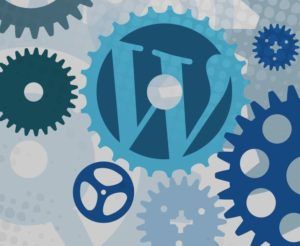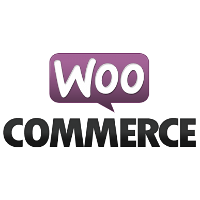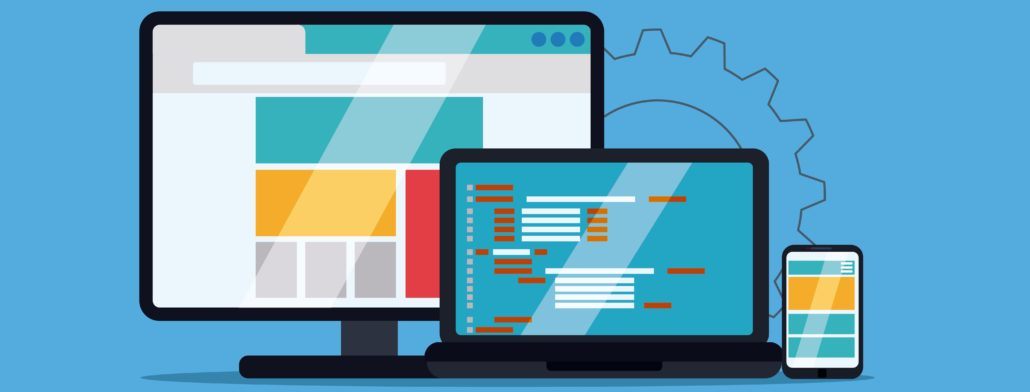In this article we will discuss what it takes to improve the speed, stability and security of a WordPress webshop with WooCommerce and WPML. To illustrate this, we’ll look at Ztijl, a multilingual webshop that sells vintage design lighting and furniture.
[av_toggle_container initial=’0′ mode=’accordion’ sort=” custom_class=” av_uid=’av-141aka9′]
[av_toggle title=’About Ztijl’ tags=” av_uid=’av-ijb1v5′]
Ztijl’s webshop provides thousands of vintage design products. Each of these showcase multiple photos and are described in two languages. This has resulted in a website that provides rich content for both the Dutch and the international market. We feel privileged to be allowed to use this webshop as an illustration for this article.
One webshop on two domain name
Although this entire webshop can be managed from a single WordPress installation, the customer will quickly notice that there are, in fact, two separate webshops. Each of these has its own domain name. Ztijl.nl is set up for the Dutch, while ztijl.com targets the international market. This set up is not only convenient for customers, English content will also be found much easier when it is not stored under a .nl-domain.[/av_toggle][/av_toggle_container]
Slow, unstable and not secure
When Ztijl approached us, they faced three main problems. For a start, their WordPress webshop had become really slow for customers and administrators alike. Also, it did not consistently perform as was expected. And to make matters worse, updating this website also proved problematic, as doing so caused even more glitches. For this reason they chose our combined Premium WordPress hosting & support services.
To tackle these three problems, we started by analysing how the website was constructed. Doing so, we zoomed in on three crucial factors: the speed of their current hosting party, the plugins that were using and the theme they had applied to it. From there onward, we started to improve their site step by step. In this article we will clue you in on how we did this.
Step 1: Faster WordPress hosting
WPML ($29)
If you decided to go budget on your WordPress hosting service, you may quickly discover the limits of their servers as, in our experience, such companies are mainly suitable for smaller websites. For this reason, it is important not to cut back on WordPress hosting. Visitors (and Google as well) value the fact that they can swiftly click through the site. If your site feels too sluggish, visitors will start leaving the site in search of alternatives. Besides, all other optimisation we discuss in this article are of little to no effect when you are lacking a fast server as a base; the hosting capabilities are a limiting factor again and again.
To counter this, we transferred Ztijl’s WordPress webshop to Kinsta, a new WordPress hosting provider we deliberately choose to station high performance websites at. Once we chose to transfer Ztijl to Kinsta, we were already able to instantly decrease the loading speed of this webshop by 52%, without having changed or optimised anything else.
Step 2: Updating WordPress
Always make sure that WordPress, your plugins and the theme you use, are up-to-date. Optimising your website can be a waste or time if you did not make an effort to run updates. Doing so may even solve problems you have been running into from the start. The opposite holds true too; when an update is the source of your problems, it is better to find out immediately than in the end of the whole optimisation process.
When using purchased themes and plugins, it is equally important to verify if licenses have not expired yet. In case they have, it is best to renew them. At this point it is also advisable to check whether or not additional updates will be launched for the plugins and theme of your choice (read more about this in step 4).
Step 3: Disable unnecessary WordPress plugins
Knowing all this, we make a habit of meticulously scanning all installed plugins to know exactly what they are doing and to make sure that they are a necessity for your website. This approach caused us to advise Ztijl to go ‘back to basics’. Especially when unexpected shifts continue to occur on your WordPress website, it is highly advisable to cut back on your plugins. Of course, this can be a bit of a challenge, as you will have to drop functionalities that may have cost you a lot of time (and often money too!). Still, ‘less is more’ holds true in this case too. To get that digital clean up going, ask yourself how many times a certain functionality will actually be missed by your visitors. This will put things in a proper perspective so you can be decisive about it.
Ultimately, for Ztijl’s WordPress webshop, we ended up cutting the number of plugins in half. Some plugins could be easily be removed because their functionality could be solved in a different way. Others we deleted as they would make the website too complex in the long run. Most importantly, by deleting these plugins, we were able to improve the level of security and increase the speed of the website.
Step 4: Analysing WordPress plugins
Next, it is just as crucial to check if WordPress plugins are able to co-operate. For a webshop like Ztijl, it was paramount to see if plugins were not only compatible with WooCommerce, but with WPML as well. Would this not have been the case, then an alternative had to be found.
WPML keeps an (incomplete) list of plugins that are WPML compatible. You can find suitable plugins (tagged ‘wpml’ and ‘woocommerce’) on platforms like CodeCanyon.
In short, it boils down to being aware of the complexity of running a WordPress website with two sophisticated plugins like WPML and WooCommerce. Each new update of any of these three systems, must be compatible with the others.
However, should a plugin not be compatible with WooCommerce, then this does not mean it won’t work at all on your website. A plugin offering mainly functionalities for a blog page or the footer of your site, has little to do with WooCommerce and will most likely work just fine. It is wise to test this, though (see also step 6).
While analysing your plugins, it is advisable to check the speed of each plugin too. A handy plugin for this is the P3 (Plugin Performance Profiler).
Stap 5: Theme analysis
The WordPress theme of your choice should be approached in pretty much the same way as your plugins: Is your theme being maintained, actively updated and is it compatible with WPML and WooCommerce? A theme that is not habitually being updated, can start to lag behind with regards to the functionalities WooCommerce and WPML have to offer. With that, a good quality theme most often has the benefit of helping your website load faster and has a positive effect when it comes to search engine optimisation.
With Ztijl we concluded that many of the unexpected quirks of their website were solved by selecting a WordPress theme that did meet the criteria mentioned above (that is: Enfold, one of our favourite WordPress themes).
Step 6: Checking your WooCommerce webshop extensively
- Are the right products being displayed on the corresponding category pages?
- When using product filters, do you get the right results?
- Is the search function working, and does it swiftly provide relevant information?
- Is the number of products displayed correctly?
- If a product is not available, sold out, or free of charge, is this showing correctly?
- Can you actually put a product into your shopping cart?
- What happens when you order more products than you hold in stock?
- Is the price of shipping being calculated correctly?
- Are all send and payment methods correct when ordering products?
- Is a confirmation mail being send upon finishing your purchase?
- Are stocks correctly being adjusted once an order has been placed?
- Are visitor statistics recorded correctly?
If some of these steps cannot be followed without flaw, deactivate all plugins except for WPML and WooCommerce, and then check if these steps can be performed. After this, activate one plugin at a time, testing that same step to see which plugin is causing the glitch. You may want to sent the plugin developer the information you gathered and ask them to fix this problem. When there are no plugins causing problems, you can replace your theme and start testing again.
Stap 7: Optimisations
optimising your WordPress website
Since you are dealing with customer data and billing information, it is of the utmost importance for you to be able to guard this information properly. Part of that is done by updating your plugins and your theme regularly. Part of this is done by using safe passwords. But there is another layer of security that you can add: SSL.
SSL is an encryption method that enciphers the data traffic between your customer and your server. This makes it harder for hackers to steal the information that is being exchanged—like personal data of your customers. Every premium hosting party offers the option to activate SSL on your website (at times for a extra fee). The adres of your website, will then change from http:// to https://. Also, a green lock will become visible in the address bar of your browser, signalling a level of trustworthiness to visitors.
There are another two reasons to choose SSL. First of all, Google has announced it will reward the usage of SSL for your website with a better search ranking. Do not expect to be at rise to the top of the results list, but every little bit helps when it comes to search engine optimisation.
Finally, that little green lock in the address bar does build trust and can win some customers over. Confidence in the security of online shops remains fickle. Exhibiting a secure connection, communicates that you value your customers’ online security as well.
This is why we switched on SSL for Ztijl on every single page of their webshop, even those pages on which customers do not exchange any personal information. Besides that, images and static scripts are delivered via a CDN (Content Delivery Network) and are being automatically optimised with the Kraken.io service.
Finally: Installing new plugins?
By now, you have updated your entire website, scrutinised the number of plugins and trimmed them down, and performed several analyses, optimisations and checks. There’s a solid base to build on as you also did a thorough analysis of the remaining plugins and your theme. However, you may – sooner or later – come across plugins that you would want to implement on your website. How do you prevent installing tens of plugins once again that will have you end up again with an unstable and slow website?
Remember first of all: look before you leap! What held true in step 3, still counts: continue to ask yourself what the added value of this plugin will be for your website, even if it would take a bit of effort to build it into your website structure properly. Secondly, make a note of when you installed each individual plugin. Should problems occur down the road, then you can switch off these plugins one by one in reversed chronological order. This way, the troublesome plugin can be traced faster.
Conclusion
There are three important things to remember to make your WordPress webshop with WooCommerce and WPML safer, faster, and more stable: Do not budget on WordPress hosting, be careful when using plugins, and check if you have chosen the right theme. Lastly, a optimisation move can increase your performance speed, but can alternatively further complicate your website.










